I would like to make a gif from a file data.dat:
#x y z radius color
#set 1
222.333710 505.354645 -2938.58545 10.0000000 1.00000000
854.180481 64.3471069 -2844.13477 12.5992117 53.0000000
-109.606003 173.377197 -2975.83960 17.0997639 55.0000000
#set 2
0.746170461 -0.868437707 -2876.14355 123.856239 2001.00000
#set 3
1.56590324E-02 6.23370660E-03 -2870.87378 129.126297 4001.00000
At each time step I would like to plot:
splot "data.dat" using 1:2:3:4:5 with circles lc var notitle
for each set. Meaning at time 1 to plot the set 1, at time 2 the set 2 and so on.
The question of how to plot until a defined line has already been asked here. But how is it possible to plot until a line one doesn't know ? My idea is to code to plot until a blank line, but I'm open to any suggestion.
Eventually, in order to create the .gif I would write :
reset session
set term gif size 700,700 animate delay 30 optimize
set output "data.gif"
set xrange [-1000:1000]
set yrange [-1000:1000]
set zrange [-3000:-2500]
do for [a=1:3:1] {
###### code for splot
}
set output
